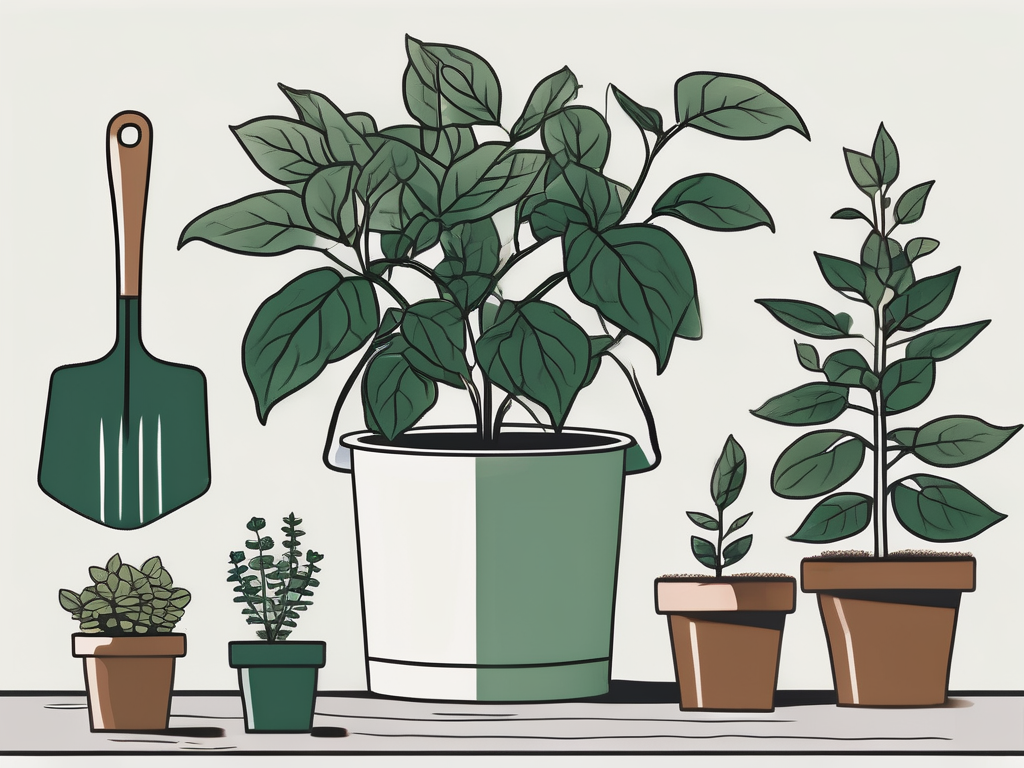
The Angel Wing Begonia is a favorite among plant people for its striking foliage and charming blooms. Whether you're a seasoned plant parent or just starting to fill your home with greenery, propagating your Angel Wing Begonia can be a rewarding experience. You not only get to expand your plant family but also gain a deeper understanding of how these beautiful plants grow.
This article will walk you through each step of the propagation process, offering practical tips and insights along the way. From selecting the right cutting to ensuring your new plant thrives, you'll find everything you need to successfully propagate your Angel Wing Begonia.
Understanding Angel Wing Begonia
Before diving into the propagation process, it helps to know a bit about the Angel Wing Begonia itself. Named for its wing-shaped leaves, this plant is part of the Begoniaceae family and is native to tropical regions. Its striking appearance comes from its asymmetrical leaves adorned with silver or white spots, which can add a touch of elegance to any room.
Angel Wing Begonias thrive in a warm, humid environment with indirect light, making them perfect for indoor settings. They can produce lovely clusters of flowers ranging from soft pink to vibrant red, adding an extra splash of color. Understanding these preferences is crucial when propagating, as it will help you create the ideal conditions for your new plants to flourish.
Gathering Your Supplies
Like any good project, successful propagation starts with having the right tools on hand. Here's what you'll need:
- Healthy Angel Wing Begonia: Choose a parent plant that is robust and free from disease or pests. A healthy plant will give your cuttings the best chance of rooting.
- Sharp Scissors or Pruning Shears: A clean cut is essential to prevent damage to the plant. Make sure your tools are sharp and sterilized to avoid infections.
- Rooting Hormone (Optional): While not necessary, a rooting hormone can speed up root development and improve success rates.
- Potting Mix: Use a well-draining mix. A combination of peat, perlite, and vermiculite works well for begonias.
- Pots or Containers: Small pots or seedling trays are ideal for starting cuttings. Ensure they have drainage holes to prevent waterlogging.
- Plastic Bag or Dome: This will help maintain humidity around the cutting, which is crucial during the rooting phase.
Having these supplies ready before you begin will make the process smoother and more enjoyable.
Choosing the Right Cutting
Not all parts of your Angel Wing Begonia are suitable for propagation. When selecting a cutting, look for a healthy stem with several leaves. The cutting should be about 4-6 inches long, with at least two nodes (the points where leaves grow out of the stem) since roots will form at these nodes.
Here's how to choose the perfect cutting:
- Look for Healthy Growth: Avoid stems that are damaged, diseased, or have yellowing leaves.
- Select a Non-Flowering Stem: If possible, choose a stem without flowers. Flowering can take energy away from root development.
- Check for Nodes: Make sure your cutting has visible nodes, as these are crucial for root growth.
By starting with a strong, healthy cutting, you're setting yourself up for propagation success.
Making the Cut
Now that you've selected the right cutting, it's time to make the cut. This step is fairly straightforward, but precision is important:
- Use Clean Tools: Sterilize your scissors or shears with rubbing alcohol to prevent any potential infections.
- Make a Clean Cut: Cut the stem just below a node. A clean, sharp cut encourages quicker rooting.
- Remove Lower Leaves: Trim off the lower leaves, leaving a few at the top. This prevents the leaves from sitting in water, which can cause rot.
Remember, the goal is to minimize stress on the plant, so handle your cuttings with care.
Preparing the Potting Mix
Your cuttings will need a nurturing environment to develop roots, and the right potting mix is key. A well-draining mix is crucial, as Angel Wing Begonias don't like to sit in water. Here's how to prepare your mix:
- Mix Ingredients: Combine equal parts peat moss, perlite, and vermiculite. This blend provides the drainage and aeration begonias love.
- Moisten the Mix: Lightly moisten the potting mix before using it. It should be damp but not waterlogged.
- Fill Containers: Fill your pots or seedling trays with the prepared mix, leaving a bit of space at the top to accommodate the cutting.
Creating the right mix ensures your cuttings have the best start, promoting healthy root development.
Planting the Cutting
With your cutting and potting mix ready, it's time to plant. Here's how to do it:
- Dip in Rooting Hormone (Optional): If you're using a rooting hormone, dip the cut end of the stem into the powder. Tap off any excess.
- Make a Hole: Use a pencil or a similar object to create a small hole in the potting mix.
- Insert the Cutting: Gently place the cutting in the hole, ensuring at least one node is below the surface. Firm the soil around the stem to provide stability.
Planting with care and attention will give your cutting the best chance to develop into a robust plant.
Creating the Ideal Environment
Now that your cutting is planted, it's crucial to create the right environment for rooting. Angel Wing Begonias love humidity, so maintaining a moist atmosphere is important. Here's how to achieve that:
- Cover the Cutting: Place a plastic bag or dome over the pot to trap humidity. Ensure it doesn’t touch the leaves to prevent rot.
- Provide Indirect Light: Position the pot in a spot with bright, indirect light. Direct sunlight can scorch the leaves and dry out the soil.
- Maintain Warmth: Keep the temperature between 70°F and 75°F. A warm environment encourages quicker root development.
By replicating the begonia's natural conditions, you help the cutting thrive during this critical phase.
Caring for Your New Begonia
Once roots start to form, you'll notice new growth on your cutting. This is an exciting milestone, but it's essential to continue providing proper care:
- Watering: Keep the soil consistently moist but not soggy. Overwatering can lead to root rot.
- Fertilizing: Once the plant is established, feed it with a balanced liquid fertilizer every month during the growing season.
- Pruning: Trim any dead or yellowing leaves to encourage healthy growth.
Consistent care will ensure your new begonia thrives, adding beauty to your home.
Transplanting Your Begonia
When your cutting has established a robust root system, it's time to consider transplanting it to a larger pot. Here's what to do:
- Choose the Right Pot: Select a pot that's one size larger than the current one, ensuring it has drainage holes.
- Prepare New Potting Mix: Use a similar mix to what you used for the cutting, ensuring it's well-draining.
- Transplant Carefully: Gently remove the plant from its current pot, being careful not to damage the roots. Place it in the new pot and fill in with fresh soil.
Transplanting is a great opportunity to check the health of the roots and give your begonia room to grow.
Final Thoughts
Propagating Angel Wing Begonias can be a delightful way to expand your plant family and enhance your indoor garden. With the right techniques and a bit of patience, you'll soon have a thriving new plant to enjoy.
At Cafe Planta, we love helping plant lovers like you nurture their green friends. If you have any questions or need more tips, feel free to email us or send us a message on Instagram. Whether you're a seasoned plant parent or just starting out, we're here to support your journey and share our passion for plants with you.












